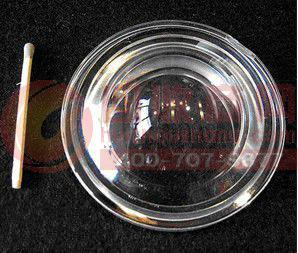
What is water plastic?
Water plastic refers to engineering plastics used in water purifiers, filtered water, purified water, etc. These plastics are not hydrophilic and can be exposed to water for long periods of time. Water plastics has just started, the market capacity is huge, product design is diverse, and the development prospects are very broad.
Three major types of common water plastics
Polyphenylene ether
Polyphenylene ether (PPE, also known as PPO): used in water pipes, joints, water meter housings and impellers, water pump impellers, faucets, valve body valve cores, etc.
Polyphenylene ether features:
1 Safety: no pollution to water quality, no precipitation of additives;
2 high compressive strength, good toughness, to prevent water leakage (after adding glass fiber, static pressure can reach 7MPa, bursting pressure is 5MPa);
3 low water absorption rate and good dimensional stability;
4 The elongation retention rate is good, and the thermal expansion coefficient of the contact connecting material is consistent to prevent water leakage when the temperature changes. High temperature creep is low;
5 low density, light weight, can reduce material costs;
6 chemical stability, acid, alkali, residual chlorine.
Other materials, water pipes, joint defects:
1 Currently used polyoxymethylene (POM) joints: there are formaldehyde residues, which have safety risks to water quality; low strength; and extremely resistant to oxidation. Oxidizing fungicides such as ozone, bromine, iodine and residual chlorine will be oxidized. Corrosion, causing system leakage;
2 Currently used nylon (Pa) pipes and joints: large water absorption, poor dimensional stability; not resistant to hydrolysis, humidity performance decreased by 60%;
3 copper (Cu) pipes and joints commonly used at present: expensive; often lead, lead damages the human nervous system, especially for women and children;
4 Polyvinyl chloride (PVC) pipes and joints currently used: low strength.
2. Polypropylene
Mineral reinforced polypropylene
At present, the plastic granules used for the production of filter bottles in the water purifier factory are usually made by adding additives such as calcium carbonate powder to the PP material, and mixing them uniformly; and using ultrafine talcum powder powder instead of calcium carbonate powder, the plastics can be made. The shrinkage is smaller and the strength is higher.
Features:
1 Hygienic safety: to pass NSF certification;
2 good strength, can withstand higher pressure (can reach 2.4 ~ 3.0 MPa) under the same structure (such as wall thickness);
3 good chemical stability, acid and alkali resistance, oxidation resistance, anti-aging;
4 weldability is good;
Glass fiber reinforced polypropylene
Features:
1 Hygienic safety: to pass NSF certification;
2 higher strength, pressure resistance can reach 3.0 MPa or more, of which long glass fiber reinforced polypropylene has higher compressive strength, can reach 4.5 MPa pressure without blasting;
3 low shrinkage, close to aBS;
4 excellent fatigue strength and mechanical strength;
The coefficient of linear expansion is low, and the coefficient of linear expansion of long glass fiber reinforced polypropylene can be close to metal;
6 good chemical stability, acid and alkali resistance, oxidation resistance, anti-aging;
7 good fluidity and easy processing.
Silver ion antibacterial polypropylene
Features:
1 broad-spectrum antibacterial (for bacteria such as Escherichia coli, Staphylococcus aureus, Candida albicans, black mold, fly mold, etc., have good antibacterial and antibacterial effects), high antibacterial efficiency. It can be used for mildew and antibacterial in humid places such as kitchen;
2 high security, to pass FDA and EPa certification;
3 Durable, long-lasting antibacterial;
4 bacteria are not easy to develop resistance.
3. High gloss plastic
Highlight aBS
Features:
High gloss, gloss to mirror effect; scratch resistance, Rockwell hardness is 20% higher than ordinary aBS; low cost.
High-gloss polypropylene, used abroad to replace aBS
Features:
Sufficient supply, low price; gloss can basically be the same as aBS; yellowing resistance is good, no discoloration, and aBS is easy to yellow; heat resistance and long-term heat oxidative aging performance is good.
High gloss flame retardant polypropylene
Features:
Good gloss; flame retardant properties; fluidity, easy processing and forming; yellowing resistance.
High gloss composite reinforced polypropylene
Features:
The shrinkage rate is close to that of aBS. The original aBS mold is not modified or slightly modified, and can replace aBS; the cost is lower than aBS; the heat resistance temperature is higher than aBS; the yellowing resistance does not change color. High light resistant high impact polystyrene.
Ultra Plantâ„¢ Grow Light offers One Chip Technology aimed to meet your indoor growing expectation such as improve plants' quality, increase yield, or better the margin, etc., all for helping you realize a higher return on your crops.
Ultra Plantâ„¢ Grow Light is combined our advanced All-In-One technology with patented optical design and customized light full spectrum supported from our experienced LED engineers, plant specialists and other partners working on horticulture.
From Ultra Plantâ„¢ APP, you are able to schedule the growing process including photoperiod, brightness and spectral in advance. The lighting system will help you grow smarter, easier and better.
Ultra Plantâ„¢ is the most versatile horticultural grow lighting fixture for indoor plants with flexible full spectrum, brightness control and uniform, wider light distribution, suitable for top lighting of all types of crops. No matter it applies to anywhere for any crop, Ultra Plantâ„¢ can do perfect work for you.
Uv Grow Light,Uv Light For Plants,Uv Lamp For Plants,Uv Grow Lights For Plants
Feton Corporation , https://www.ftplantled.com